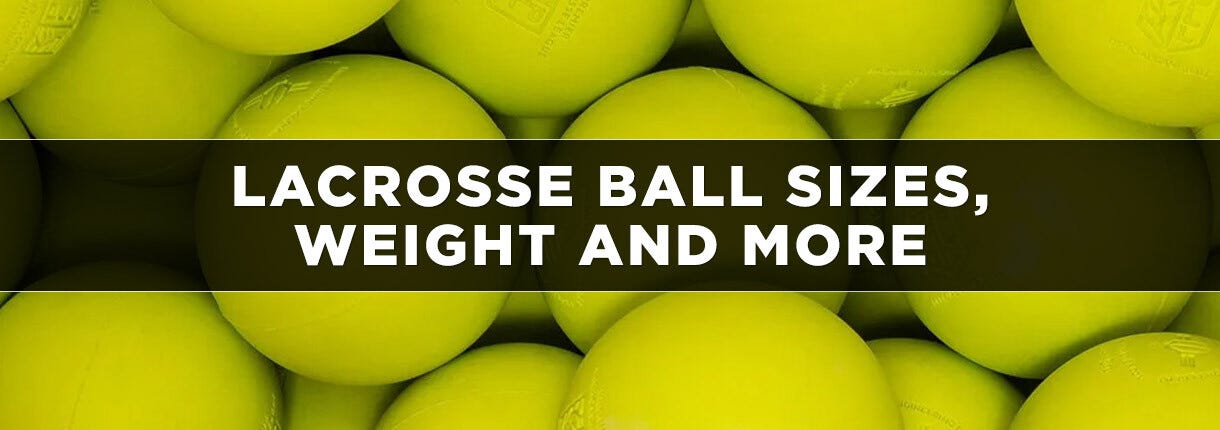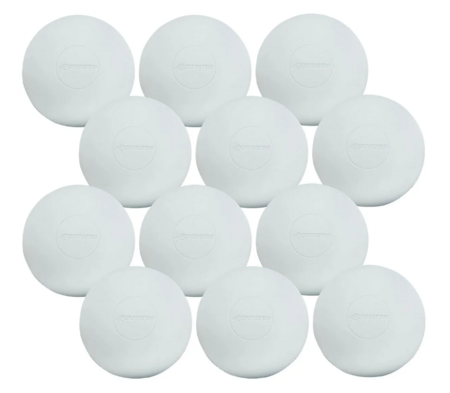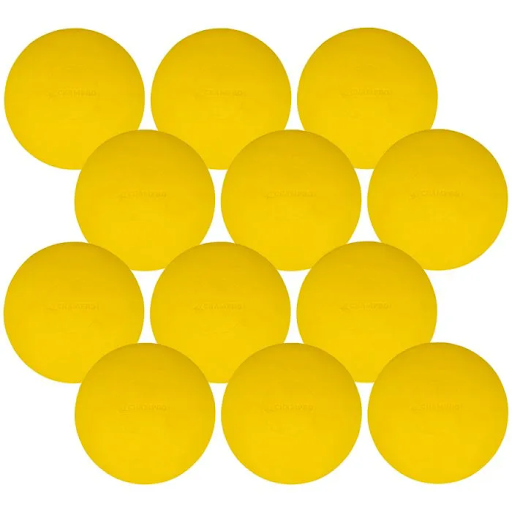Lacrosse Ball Weight, Size, Diameter, and More

The lacrosse ball's importance extends beyond mere utility; it acts as the catalyst for the sport's fluid and fast-paced nature, demanding precision in passing, shooting, and catching. As players are constantly active across the field, the ball becomes the focal point of learning how to cradle a lacrosse ball, overall skill and strategy, dictating the tempo and outcome of each match. Understanding the composition of the ball offers insight into its unique properties and how it interacts with both players and the playing surface. Every player's strategic decisions are influenced by how the ball bounces, grips, and can be utilized in various levels of competition.
In this article, we will cover:
Official Lacrosse Ball Weight
| Specification | Measurment |
|---|---|
| Diamter | 62.7mm to 64.7mm |
| Circumference | 7.75 inches to 8 inches |
| Weight | 5.0 ounces to 5.25 ounces |
| Bounce Height (Drop test) | 43 inches to 51 inches (from 72 inches) |
| Material | Solid rubber or other synthetic material |
| Color | White, yellow or orange (depending on league requirements |
Lacrosse Ball Standardization


Material Composition
Vulcanized Rubber:
- Durability: Vulcanized rubber undergoes a strengthening process with heat and sulfur, enhancing its resilience and long-lasting performance.
- Predictable Bounce: The vulcanization process ensures a consistent bounce, which is critical for controlled gameplay.
Synthetic Rubber:
- Fine-Tuned Hardness: Synthetic rubber compounds allow manufacturers to adjust the ball's hardness, optimizing it for accurate passing and handling.
- Enhanced Handling: The ability to fine-tune hardness improves the ball’s tactile feel, giving players better control on the field.
Combined Benefits:
- Consistent Performance: These materials are chosen to meet lacrosse governing body standards, ensuring fair and consistent play.
How To Choose the Right Lacrosse Ball


Impact on Play
- Durability:
- Durable balls withstand intense impacts and rough play, maintaining their shape and performance over time.
- Bounce:
- Consistent bounce affects passing accuracy, catching, and shooting. Predictable bounce aids in better control during gameplay.
- Hardness:
- Hardness ensures the ball travels accurately and at high speeds, crucial for effective shooting and accurate passing.
- Balance Between Hardness and Elasticity:
- Safety: A balance is essential to avoid injury. If the ball is too hard, it can cause significant harm on impact. Too soft, and it might not perform well.
- Performance: Elasticity contributes to the ball's bounce and control. The right balance ensures the ball remains safe for players while maintaining optimal performance characteristics.
Lacrosse Ball Sizes, Weight and More - Frequently Asked Questions
How much does a lacrosse ball weigh?
A standard lacrosse ball typically weighs 5 ounces. This weight is regulated to ensure consistency in gameplay, allowing players to develop accurate skills and maintain fair competition across different levels of play.
How heavy is a lacrosse ball?
The weight of a lacrosse ball is comparable to that of a large lemon or an apple. This makes it easy to grip and handle, which is essential for the quick movements required in the game.
How big is a lacrosse ball typically?
A standard lacrosse ball has a diameter of 2.5 inches. This size allows for control and handling during play, making it easier for players to showcase their skill.
Can lacrosse ball dimensions vary in professional leagues?
No, the dimensions of lacrosse balls do not vary in professional leagues. Standardization of size and weight is crucial at every level. .
How much does a lacrosse ball weigh in grams?
A lacrosse ball weighs between 142 and 149 grams. This weight range is standardized to provide consistency.






Login and Registration Form
or
Create an account